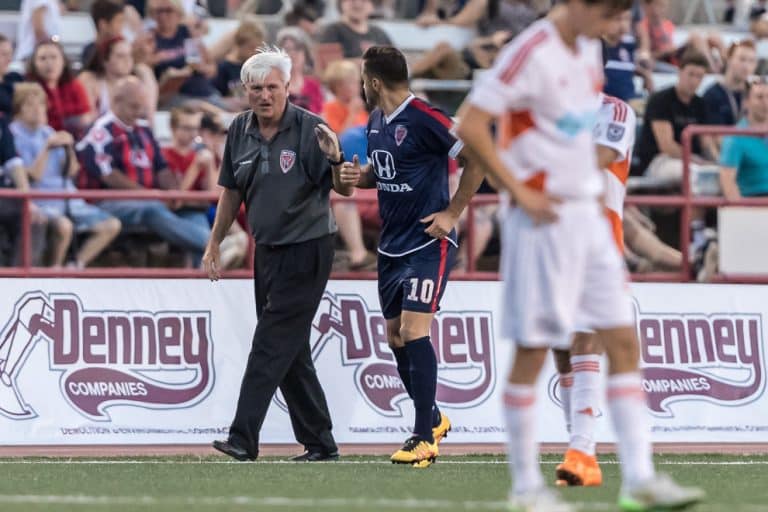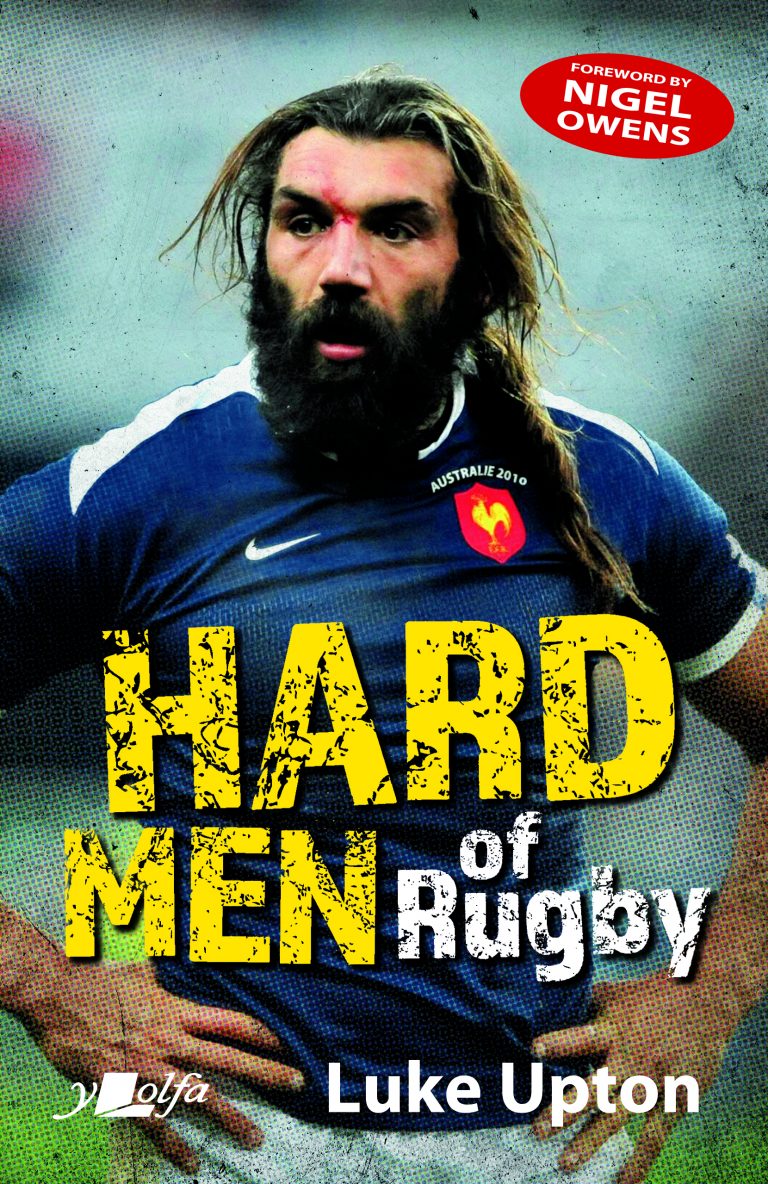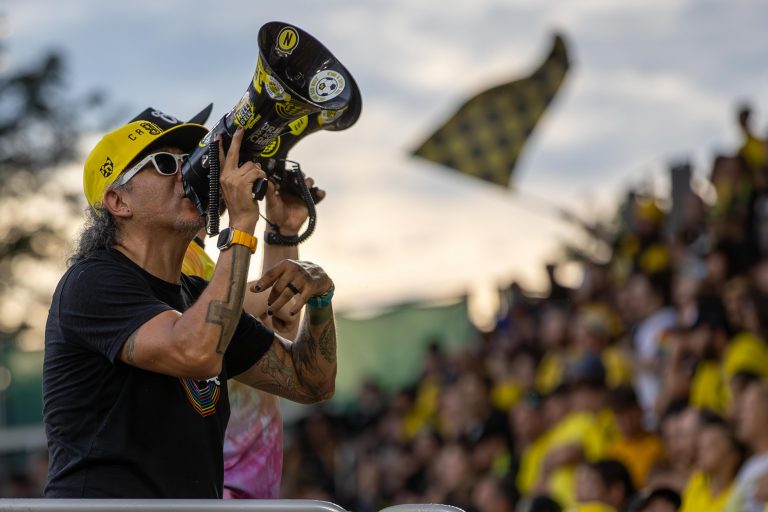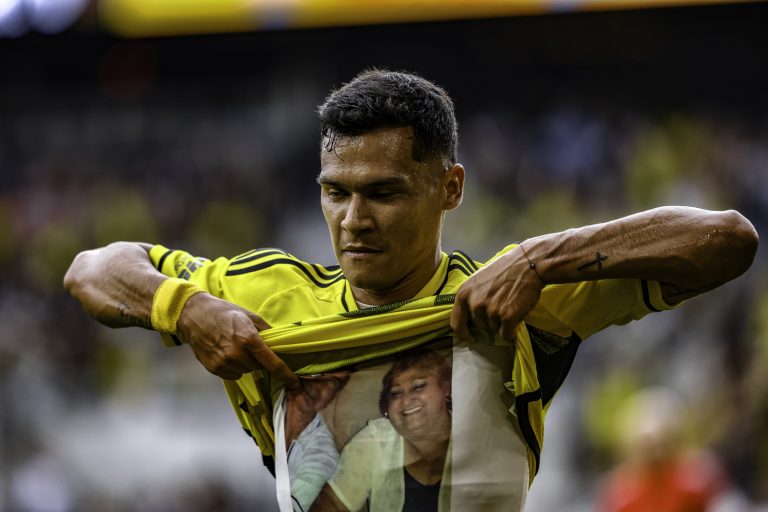
Dennie Wendt’s Hooper’s Revolution is a wildly entertaining read, one of the top soccer titles we have ever reviewed. It’s an eclectic mix of creative alternate history, unruly fiction, and a massive passion for the beautiful game. Simply put, it feels like The Man in the High Castle, Once in a Lifetime, and a Hunter Thompson novel rolled together. It’s really an awesome experience, a truly one of a kind read.
The basic premise of the book is quite simple and at the same time, very creative and outside the box. It features a disgraced English footballer that came to America after finding other options a bit challenging. He comes to Portland, in reality a great football city, in the weird soccer era of the 1970s. He comes across a Communist plot to destroy democracy, America, and the world’s greatest football player.
Wendt creates a whole cast of characters, teams, and a national league inspired by real life. Each with their own history and background, which is an incredible feat in itself. The plot is quite entertaining on its own, but an absolute delight when paired with all of the football content. It’s great literature and the story behind the story is just as great.
Let’s hear from Wendt in a quick Q&A session.
1. What motivated you to write this novel?
It’s the book I wanted to read. Most stories of the original North American Soccer League focus on the glamour of the Cosmos and players like Johann Cruyff and George Best and weird sub-stories like the Caribous of Colorado and Team America, but mostly the league was just regular guys—a lot of them British—who came over here for an adventure and to see what they could do. The team I followed, the Portland Timbers, was full of those players, so that’s the NASL I really knew. As the years have gone by, I’ve met a few of them and I’ve been able to ask them what it was like, and they can’t even start their stories without having a laugh. It was just such a crazy time, and so different from the football they knew. So I’ve always believed there was a fish-out-water story in there, and I didn’t have to exaggerate the absurdity of the real thing much to be in a realm of near science-fiction that entertained me as I wrote it. And I know plenty of people who were raised on the NASL that I thought might like spending some time in that world too.
2. Are you a soccer/football fan? Do you have a league and club you support on a regular basis?
I’m lucky—I grew up in an NASL town at the height of the league’s popularity. I saw Pele and Franz Beckenbauer play before I was ten years old. After the Timbers beat the Cosmos in a shootout in 1978, we left the stadium to see Timber Jim—an actual lumberjack—on top of a telephone pole revving his chainsaw to massive cheers. That has some power on a kid that age. Then, of course, the whole thing died out. So having the Timbers back now in Major League Soccer feels like we all caught a lucky break. I get to take my kids to Timber games, just like my parents took my sisters and me. I lived in New England for a while so I liken it to generations passing on the Red Sox experience…except we lost it and got it back, which makes it special in a whole different way. And somehow I got stuck following West Brom, which I think is because of their ’70s kit. They were a dashing side in those days. I was an exchange student in Yugoslavia in the ’80s, so I never quite got out of the habit of following those benighted leagues.
3. What caused you to hone in on Graham Day and Trevor Hockey?
Graham Day, a big, bearded defender from Bristol Rovers, was something of a folk hero in those early Timbers days. Those guys all played hard, but he seemed to play a little harder, like he was desperate to bring Portland a championship. Somewhere along the line I concocted a little narrative around him that he was here to prove to people back home that he really was a first-rate player. I modeled Danny Hooper after him more than any other player, and then when we were looking for the perfect image for the confer of the book we came across Trevor Hockey. I hadn’t heard of him, but it turned out he had a similar experience to Graham Day’s—from the Second Division in England to an opportunity in the NASL. And he had a similar beard too. The more I learned about Hockey, the more perfect he was. He even got himself an unfortunate red card playing for Wales that works with Danny Hooper’s story. I had to track down his family in England for permission to use the image (he died in 1987 coming off the pitch after a 5-a-side match), so I learned a little more about him and his time playing in America. They’re really wonderful people and were very kind to let me use the image. I wrote a tribute to him as the Afterword in the book.
4. Was the AASSA in the novel inspired by an actual league?

I guess it’s obvious enough that the American All-Star Soccer Association was inspired by the NASL, but not only. In the early ’90s, Portland had a team in the brand-new Continental Indoor Soccer League. I had just graduated from the University of Portland and the team signed a few of my former classmates, who talked the owner into giving me an audition to be their play-by-play guy. I didn’t get that gig, but they hired me to write for the program and then, the day before the first game, they realized they didn’t have a PA guy. I can still remember the phone call—I had the only case of laryngitis of my life, I was on speakerphone, someone said, “Have you ever done PA?” I lied and wheezed, “Yes.” Someone else said, “Think you’ll have your voice back by tomorrow?” I wheezed, “Yes,” again, and another voice said, “Be at the Coliseum by 6.” I did it for two seasons. Once I got a call at my apartment from the team’s office telling me they had no one to pick up the other team from the airport, so I jumped in a van and went and got them. Anyway, between the crazy of the NASL and the innards of a professional indoor soccer team from the ’90s, there was plenty of inspiration.
5. Where did you come up with the team names? What’s the worst soccer/football club name/branding you’ve ever seen?
You really can’t beat the early MLS for regrettable team naming and branding. It’s easy to say now, and the mid-’90s were a different time, but Wiz, Burn, Clash…these names do not stand the test of time, even as humor. Much, much worse than the NASL. I can still recall the mainstream sports press in the 1970s making fun of the NASL’s singular nicknames (Tornado, Blizzard) back then, but now that the NBA has the Magic and the Heat and the NHL has the Wild and the Lightning, it doesn’t look so bad. Chicago Sting and California Surf are both better names than Tampa Bay Mutiny and Miami Fusion. Might be better than Real Salt Lake too, and a lot more fun than all the FC/City/United we’re getting at the moment. Some of that kind of thing is good, but it feels like people are afraid to name teams at all right now.
As for the team names in my book, I was just trying to mimic the simplicity of the NASL’s names—they all had the feel of first ideas, all that alliteration, like they just popped out of someone’s mouth—Seattle Sounders, St. Louis Stars, Houston Hurricane, Philadelphia Fury. Kicks, Strikers, Express. Simple. So I didn’t spend too much time on the names—I just let them leap out of my brain and into the keyboard. Colorado Cowhands seemed funny to me—“Hands in the Name, Not in the Game”—and Flamingos of Florida felt like it could’ve been a name. I did want to go over the top with the team inspired by the Team America experiment, so I came up with American SuperThunder. It’s almost ridiculous enough.
6. What’s it like to work for Nike and Converse? What has been your biggest project in the shoe business?
I caught one of those cosmic breaks in life—I grew up in Portland loving sports, and I wanted to be a writer, and Nike was here. I wrote a couple novels in my 20s, piled up a stack of rejection letters, and then when I applied for the Nike job and they said, “Yes,” the feeling of someone wanting me to write for them—about sports—was overwhelming. And they were just getting into soccer then too, so the timing was perfect for me. I loved it. Surrounded by creative people trying to outdo each other all the time. Pushed me to get my act together. The Converse opportunity was another nice break; I’d always loved the brand, it was emerging from bankruptcy, and my wife and I were itching to get out of Oregon for a while. I was lucky to be there when the brand turned 100. We had a small team of hungry people rowing an oversized canoe…or an undersized pirate ship…whatever it was, that we were making look a lot like a global brand celebrating its century of coolness. I think we pulled it off, too. I went out there as a copywriter, but I ended up as a creative director and even as a marketing VP for a while in a Gerald Ford kind of way. Fantastic experience.
7. Was this novel the most enjoyable thing you have ever written?
Like I said, I wanted to read it, so the first draft, which was a sprawling, sloppy mess, came fast and easy. The 1976 season of the American All-Star Soccer Association felt like something that was actually happening, and since I wasn’t exactly sure how it was going to end, I even got to enjoy the suspense of it. The deeper I got into the book, the more certain I became that I had something that a soccer fan of a certain age might like to read, and by the time I was done, I really believed there was an underserved audience out there for it. So I guess I’d have to say it was the most enjoyable thing I’ve ever written, especially since I found a publisher.
8. How did you become involved with The Unnamed Press?
Looking for a publisher is a singularly painful experience. You research agents and editors and small presses, you think you’ve found the one for you, you obsess every detail about your submission, you hit send, and…nothing. For weeks, months. Every now and then you get a little nibble, an email back telling you you’re still under consideration, or even a thoughtful “no” from an editor who liked the book but just didn’t think they could take it on for whatever reason. Those keep you going, but they aren’t worth much in the end.
I still can’t remember where I saw it, but somehow I came across a little article about a newish press in LA called Unnamed that seemed to have just the kind of openness and creative curiosity that I thought it would take to get behind “Hooper’s Revolution,” so I polished up the manuscript, sent it down, and, like I usually did, I forgot about it. A few weeks passed and then I got an email from Chris Heiser at Unnamed that said, “Call me.” I’d never—in twenty years—gotten an email like that from an editor. So I called him. He asked me for the pitch on the book, and I told him, “If 20,ooo people filled a little stadium in Brooklyn every weekend—sometimes for men’s games, sometimes for women’s—from March to October to watch soccer and drink and sing together, how many soccer books do you think we’d have by now? But it happens in the Northwest, which New York still thinks is Middle Earth, so it seems exotic and quirky. But it’s what we do.” So he bought it.





